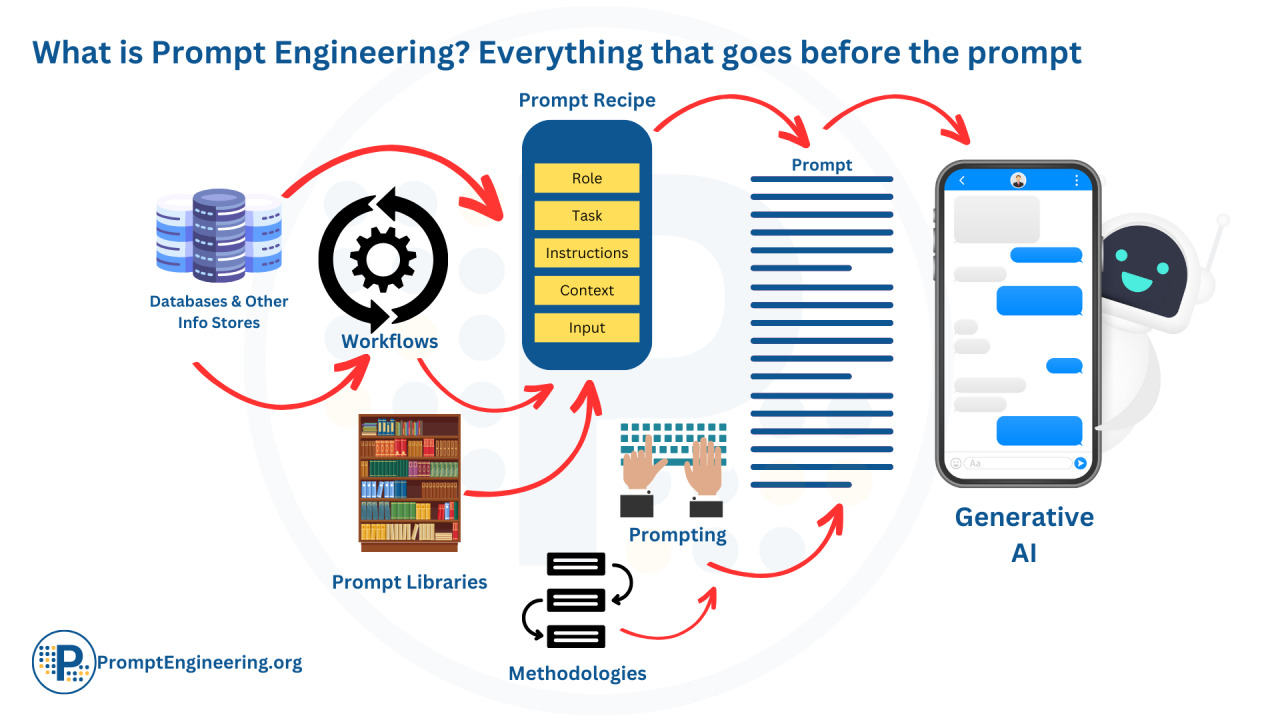Artificial Intelligence (AI) has made remarkable strides in recent years, powering everything from virtual assistants to creative tools. Whether you’re asking a chatbot for help, using AI to generate images, or trying to get precise answers to your questions, the success of your interaction often hinges on how well you communicate with the AI. This is where prompt engineering comes into play. But what is prompt engineering in AI, and how can you harness it to get the best results?

Hiheai.com
What is Prompt Engineering?
Prompt engineering is the art and science of crafting precise, detailed, and effective prompts that guide AI models toward generating the desired output. Think of it as programming, but with natural language instead of code. Instead of telling the AI explicitly what to do with a complex algorithm, you guide it by providing instructions in human language, whether for a chatbot, a text-based model, or even a text-to-image AI tool.
The key to crafting effective prompts lies in understanding how these models interpret and respond to your inputs. It’s not always about giving the AI more words; it’s about giving it the right words. With a well-crafted prompt, you can shape the output to match your intentions, whether you’re generating a report, asking for creative writing, or even requesting an artwork.
Why Prompt Engineering Matters
In most AI models, especially large language models like ChatGPT or image generation models like DALL·E, prompts are the bridge between what you want and what the AI provides. The better your prompt, the better the AI’s output. Without thoughtful prompt engineering, you might end up with vague or irrelevant responses that don’t meet your needs. Thus, prompt engineering becomes crucial to unlock the full potential of AI systems.
A simple example illustrates this: Let’s say you ask an AI model, “Tell me about history.” While the AI might give you an answer, it’s likely going to be broad and unfocused. However, if you ask, “Summarize the key events of the American Revolution in 200 words,” the AI will respond with a more tailored and relevant answer. The power is in how you guide it.

Hiheai.com
The Best Way to Think of Prompt Engineering
The best way to think of prompt engineering is like giving directions. Imagine asking someone for directions in a city. If you simply say, “How do I get somewhere?” the answer could be anything from vague to irrelevant. But if you specify, “How do I get to the park two blocks from here by foot?” you’ll get a much clearer and actionable response. Similarly, with AI, the more specific and structured your prompt, the better the outcome.
When you’re interacting with an AI model, break down your desired result into clear, concise parts. Focus on guiding the AI with directives such as summarize, generate, explain, or analyze, depending on your needs. This way, the AI knows not only what topic you’re interested in but also the form of the output you’re expecting.
Best Practices for Prompt Engineering with Text-to-Image Models

Hiheai.com
Prompt engineering for text-to-image models (like DALL·E or Stable Diffusion) requires a similar approach, though with a slightly different emphasis. These models transform text descriptions into visual representations, so clarity and specificity in your prompts are key.
One of the best practices when using these models is to focus on providing detailed descriptions of the elements you want in the image. Instead of asking for “a sunset,” try being more descriptive: “A vibrant sunset over the ocean with waves gently crashing, framed by palm trees, in a painterly style.” The more vivid your prompt, the more likely you are to get an image that matches your vision.
This is crucial for artists, marketers, or anyone seeking creative outputs from AI, as a few extra details can be the difference between a generic or stunning visual result.
The Key to Crafting Effective Prompts
The key to crafting effective prompts lies in clarity, structure, and detail. Vague prompts will result in vague responses, while well-structured, explicit prompts lead to more precise, relevant outcomes. To achieve this, consider the following:
-
Be Clear and Concise:
Aim for clarity in your requests. Instead of asking, “Tell me something interesting,” specify the area of interest, such as, “What are the latest advancements in AI?”
-
Set the Parameters:
If you want a certain length, tone, or style, mention that upfront. For example, “Write a 300-word, formal analysis of the effects of climate change.”
-
Iterate and Refine:
Don’t be afraid to tweak your prompt based on the output. AI is responsive, and you can improve results by refining your initial input.

Hiheai.com
Taking It to the Next Level: Prompt Engineering Courses
If you’re looking to dive deeper into the art of prompt engineering, there are now courses available that teach you how to master this essential skill. A prompt engineering course typically covers everything from basic principles to advanced techniques, helping you communicate with AI models more effectively.
Whether you’re using AI for business, creativity, or research, learning how to craft well-defined prompts can dramatically improve the quality of the outputs you receive. By investing time in learning prompt engineering, you’re essentially learning to unlock the true potential of these powerful AI tools.
Conclusion
Prompt engineering is an essential skill for anyone who wants to effectively communicate with AI systems. By mastering the art of crafting clear, detailed, and structured prompts, you can guide AI models to provide the best possible output, whether it’s generating text, images, or data-driven insights. As AI continues to evolve, the ability to engineer effective prompts will become increasingly valuable across many industries.



